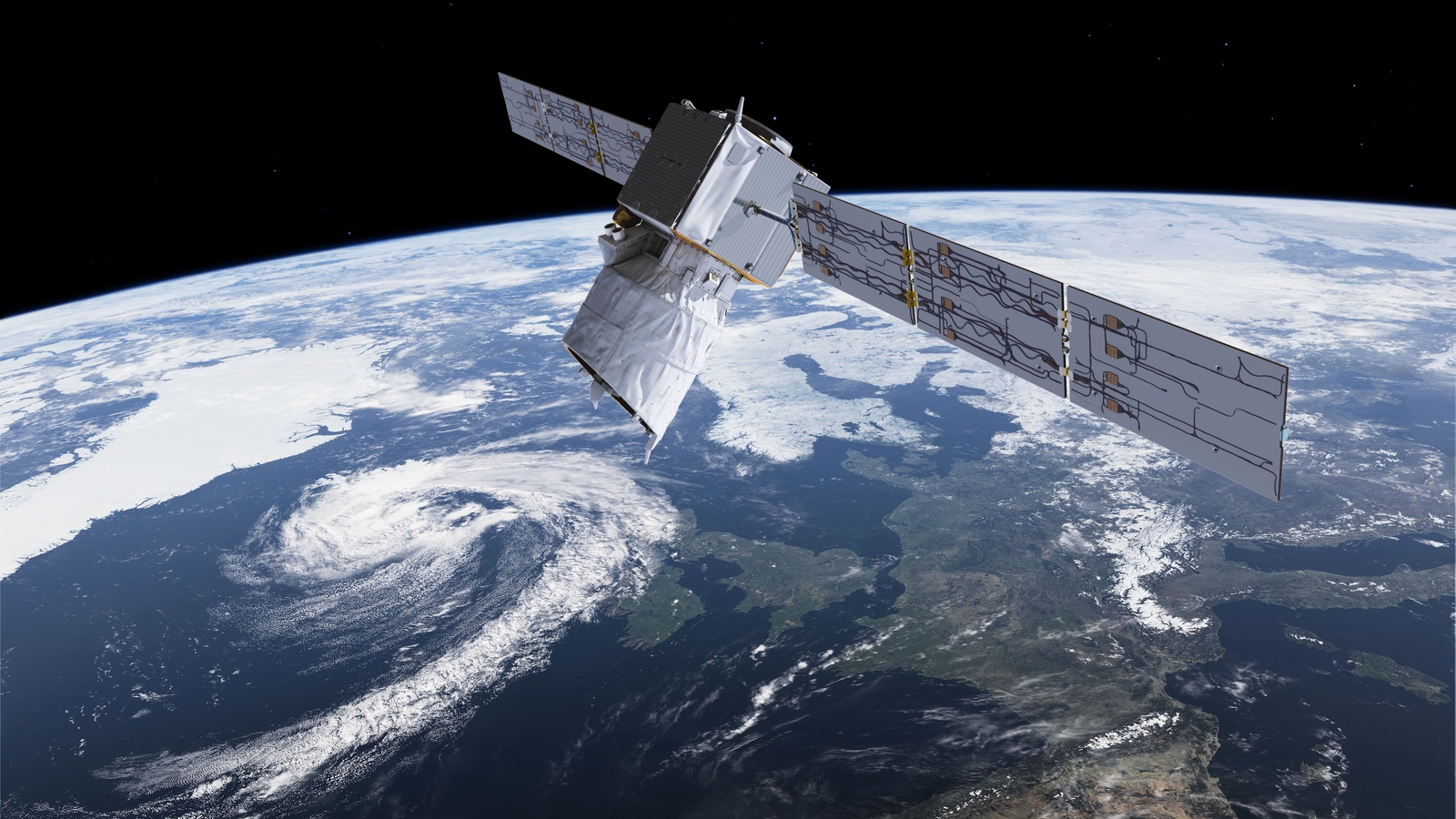WASHINGTON — The European Space Agency is in the final stages of performing an “assisted reentry” of an Earth science spacecraft, an effort that will attempt to bring the satellite down over the ocean in a little more than a week.
A series of maneuvers will lower the perigee of the Aeolus spacecraft to enable a reentry, projected over the Atlantic Ocean, on July 28. The maneuvers are intended to minimize any chance that debris from the spacecraft that survives reentry would land in populated areas.
The first set of maneuvers is scheduled for July 24 and will lower the spacecraft’s perigee from 280 to 250 kilometers, said Isabel Rojo, Aeolus operations director, during a July 19 briefing. A second set of maneuvers on July 27 will further lower the perigee to 150 kilometers.
A final maneuver on July 28 will lower the perigee to 120 kilometers. “After the execution of that last maneuver, the satellite is then expected to reenter within five hours,” she said.
That last maneuver is timed to have reentry take place during a track the spacecraft’s sun-synchronous orbit takes over the Atlantic Ocean. Limitations of the spacecraft, though, mean that ESA can’t target a specific area for the reentry.
“This spacecraft was designed and developed just before any guidelines came in place” mandating a controlled reentry, said Holger Krag, head of ESA’s Space Safety Office. That led to what the agency calls an “assisted reentry” approach, which lacks the precision of a controlled reentry but avoids an uncontrolled reentry. “It will further reduce the risk, which is already small, on the ground that is posed by the reentry,”
ESA expects up to 20% of Aeolus, which weigh about 1,100 kilograms excluding propellant, to survive reentry. The agency said that the assisted reentry approach, if successful, would reduce the risk of debris hitting someone, already extremely small, by a factor of 42.
Krag said this is the first time he is aware of any satellite operator attempting an assisted reentry. The closest comparison he offered is the reentry of NASA’s Skylab space station in 1979, where spaceflight controllers turned off gyros to make the spacecraft tumble in an effort to control the reentry location.
ESA officials billed the assisted reentry as part of a broader commitment to space safety by the agency. That included an announcement during the Paris Air Show June 22 that ESA would work with several European satellite manufacturers on a “Zero Debris Charter” where signatories would commit, by 2030, to deorbiting their satellites at the end of their lives or hiring companies that provide active debris removal services to deorbit them.
“I think ESA has always been a responsible actor and, with that action on Aeolus, we are demonstrating once more that we are willing to achieve anything, even with a space system that was not originally prepared for this,” Krag said.
The reentry will mark the end of Aeolus, launched in 2018 on what was originally planned as a three-year mission to demonstrate the ability of a lidar to measure wind speeds globally. Science operations of Aeolus formally ended in April.
“After almost five years, it has exceeded all the expectations and gone beyond what were the original objectives,” said Tommaso Parrinello, Aeolus mission manager. That included using Aeolus data in operational weather forecasting and filling in gaps in wind data when commercial airline traffic, also used to collect wind data, dropped significantly during the onset of the pandemic.
At ESA’s November 2022 ministerial meeting, member states approved plans for a two-satellite follow-on mission, Aeolus 2, slated to launch at the end of the decade in cooperation with Eumetsat. “This decision taken last year is the most tangible and most solid demonstration of the value of the success of this mission, which perhaps was not obvious at the beginning,” he said.
Simonetta Cheli, ESA’s director of Earth observation, said at the briefing that Aeolus was often called the “impossible mission” because of the many technical challenges it faced in development. “It’s a real success story.”
